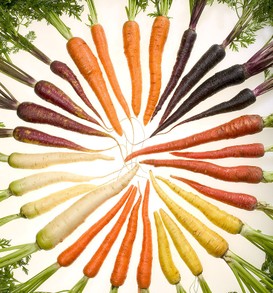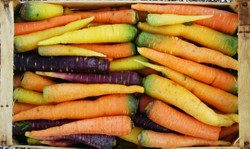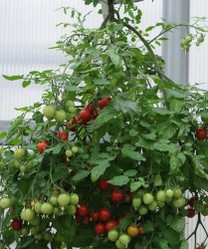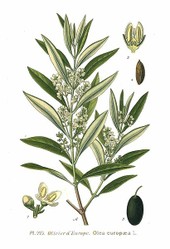But why go to the trouble of growing your own carrots when they are cheap and plentiful in our supermarkets?
Well - most gardeners love a challenge for starters! And home grown vegetables are so much tastier than the store-bought variety. Yes, they might have a few bumps and lumps here and there, but the shape perfection demanded by the supermarkets is so wasteful. Any vegetables that don't look 'normal' are discarded by the supermarkets. Seems like discrimination extends right into the vegetable world too! (Why don't they sell these 'ugly' carrots more cheaply?)
Then there's the choice to go organic and use no chemicals at all. You'll know what's in your home-grown, lumpy, bumpy, quirky carrots.
Last, but not least, how about the sheer satisfaction of pulling up your own carrots and knowing that the journey they took to reach your stove was probably less than a couple of minutes?












 How to Choose a Walking Cane or Stickon 08/01/2014
How to Choose a Walking Cane or Stickon 08/01/2014
 Michael Miller Fabulous Fabric Swatches for Quilting, Crafts etcon 07/02/2014
Michael Miller Fabulous Fabric Swatches for Quilting, Crafts etcon 07/02/2014
 The Drama of Life in the Rock Poolon 06/08/2014
The Drama of Life in the Rock Poolon 06/08/2014
 The Flâneur - Symbol of Modernity in 19th Century Parison 05/09/2014
The Flâneur - Symbol of Modernity in 19th Century Parison 05/09/2014



Comments
Frank - You are so right! :)
For carrots:
Grow in containers or raised beds
Protect seedlings from heavy raindrops
Deep soil containing a mixture of compost and sand, and definitely no stones, which make the carrots fork.
Ideally let the water come in from below to make the carrots long.
If you put love into your vegetable growing, you will succeed.
Sometimes growing carrots can be challenging! I agree about pumpkins - and gourds. They also look amazing which is a bonus. :)
Very useful information on growing carrots, thank you! I have tried growing many vegetables but succeeded mainly in growing pumpkins. They are so easy to grow! I have never tried growing carrots.
ologsinquito - great that you grew some cucumbers! They are another versatile veg. I agree it's easy to get bored - so why not go for the weird and wonderful? You could try growing gourds as they are strangely shaped, very colourful, with odd textures and although not all of them are edible, you can make some fantastic things from them. http://www.johnharveyphoto.com/BCRoad...
I lose interest as well and forget to water my plants. So I don't have much luck. But that doesn't stop me from trying to grow SOMETHING every year. One year we did get a few cucumbers.
Abby, I think your carrots might have done well because you planted them in between flowers. This 'companion planting' often deters insects and encourages bees and ladybirds. You obviously have a natural talent! :)
I love carrots! Unfortunately I'm not a very good gardener. I lose interest. I will say I planted carrots once, but I planted them as greenery in between flowers. They were pretty, and as a bonus I had something to eat at the end. They fared well with my neglect :)
Hi Frank - Great idea about the plastic drainpipes! I am with you on the raised beds! They are brilliant, look good too and are so easy to use - I had them on my allotment.
One year I had good results from growing carrots in cut down black plastic drainpipes. They were filled with compost and covered in a mixture of sand and compost. This worked one year, but when we got two seasons of bad summers in England the seeds were washed out. I have had the best results from raised beds.